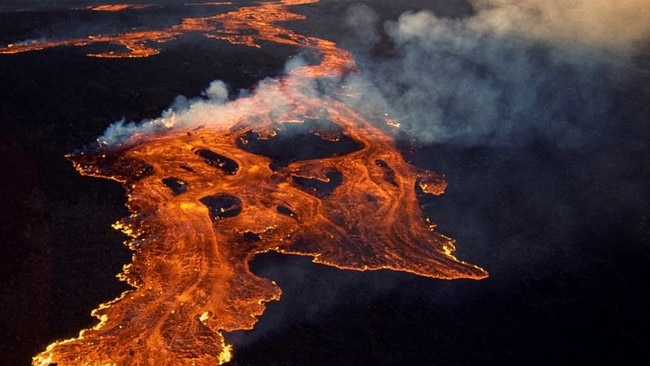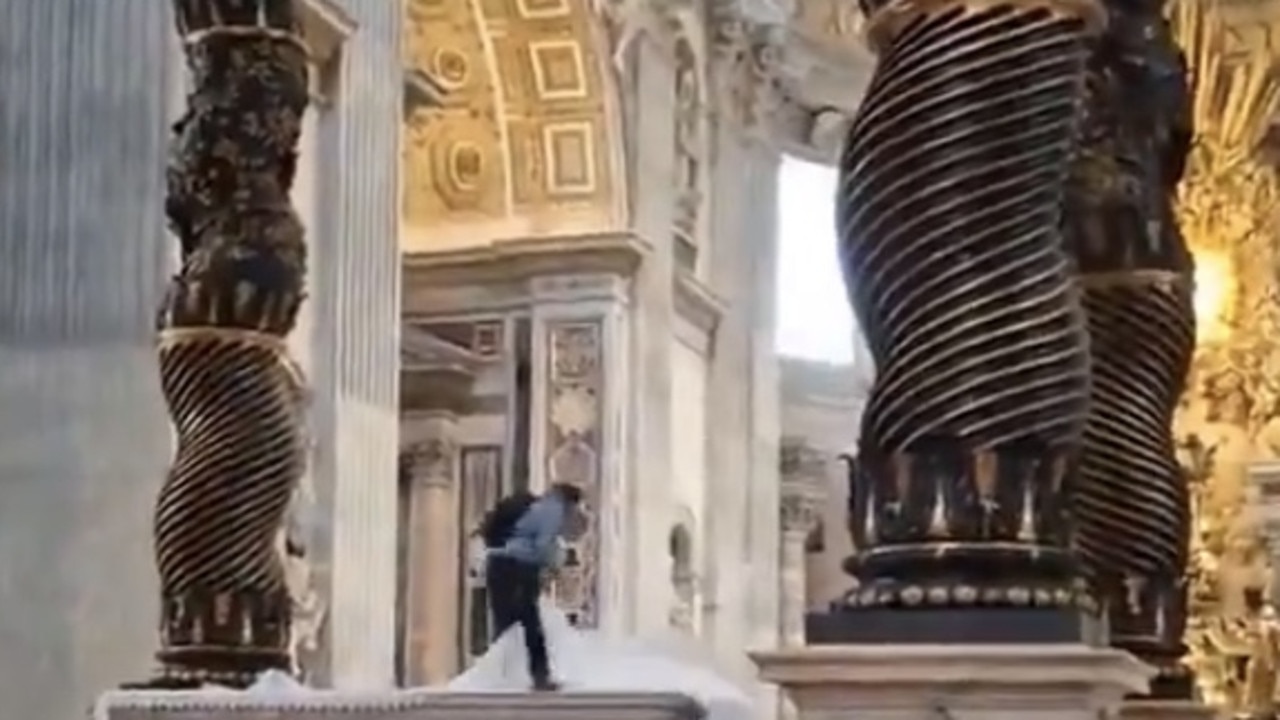Hawaii’s Mauna Loa, biggest active volcano on earth erupts for first time in 40 years
Hawaii’s Mauna Loa volcano has begun erupting for the first time since 1984, spewing lava and ash after a series of earthquakes.

Hawaii’s Mauna Loa volcano, the biggest active volcano on Earth, has begun erupting for the first time since 1984, according to the US Geological Survey.
The volcano has been spewing lava and ash since about 11:30pm local time on Sunday, according to the USGS’s volcanic activity service.
People on the Big Island had feared the moment for decades. Mauna Loa had been overdue for an eruption after its longest quiet period on record. Authorities closed part of the volcano’s summit last month because the area had been jolted by small earthquakes, a sign that an eruption could happen at any moment. Eruptions are a fact of life in Hawaii, where the islands are made up of volcanoes.
Volcanologists haven’t predicted how long Mauna Loa’s eruption will last or where the lava might travel. The USGS said the volcano’s past eruptions were dynamic in the early stages, with the lava rapidly changing direction.

The lava was initially erupting from the summit, but the USGS said Monday morning that the lava is now coming out of cracks northeast of the summit. The USGS said the lava flows weren’t threatening any nearby communities but locals should be prepared for that to change. Authorities opened shelters on the island as a precaution.
State officials said the eruption had moved to a flatter area where the lava will have time to cool and therefore move slower. It could take weeks or months for lava to potentially reach the sea, compared to hours on steeper slopes.
There have been no reports as of Monday morning of injuries, deaths or damage caused by the latest eruption. Authorities said Monday morning that they hadn’t ordered any evacuations.
Mauna Loa’s last eruption in 1984 lasted for around three weeks. No one died because of that eruption, but past ones have been deadly. Other volcanoes in Hawaii have erupted in recent years.
Mauna Loa is a looming presence on the Big Island, standing more than 13,600 feet above sea level. Residents on social media reported seeing the sky cast in glowing orange early Monday miles away from Mauna Loa’s summit.
Paul Francis, 33 years old, woke up to texts from people on the U.S. mainland Monday morning asking if he could see the eruption. He stepped outside his hotel in Waikoloa Village, about 40 miles northwest of the Mauna Loa summit, and looked up.

“It looked like the sky was on fire,” said Mr. Francis, who was on vacation from Kansas City, Mo., to celebrate his mother’s retirement.
He said he could see a patch of lava getting longer as it flowed down the volcano. He also saw smoke below the clouds.
“Once in a lifetime for sure,” said Mr. Francis, a training specialist at a pharmacy software company.
Volcanologists had said they expected Mauna Loa to erupt again and threaten residents on the Big Island. Over the past 3,000 years, Mauna Loa has erupted roughly every six years, experts said. Half of the eruptions on record stayed within the summit area, while the rest sent lava spewing down toward residential areas.
The USGS said in September that it had recorded more than three dozen earthquakes beneath Mauna Loa, but this didn’t indicate magma was moving toward the surface.
Over the past day, the agency noted dozens of earthquakes near Mauna Loa with a magnitude as big as 4.2.
The National Weather Service in Honolulu issued an ashfall advisory for the island on Monday morning. It warned that up to a quarter inch of ash could be expected around the volcano. People with breathing difficulties should stay inside, forecasters said.
State transportation officials warned that travellers heading to the Big Island should check with their airlines before they leave because of the eruption.
Tracy Gregg, a geology professor at the University at Buffalo, said if there is too much lava in the crater it could overflow into surrounding areas, like a bathtub would. In that case, the lava would likely find one easy path out and then follow it.
“It’s unlikely lava will spill willy-nilly out of the summit,” said Ms. Gregg, who has researched volcanoes.
Ms Gregg said it is possible for a big earthquake to strike around Mauna Loa, but usually the biggest tremors happen before an eruption, when magma is breaking a new pathway through the ground.
She added that it is difficult to predict how long this eruption will last or where the lava will go.
“Every volcano has its own unique personality,” she said.
Lava from the 1984 Mauna Loa eruption broke down levees and nearly reached Hilo, the island’s biggest city. The lava stopped about 4.5 miles outside Hilo in part because dense vegetation slowed the lava’s advance.
The 1984 eruption wasn’t deadly, but the lava burned everything in its path. During Mauna Loa’s 1868 eruption, one of Hawaii’s deadliest disasters, 77 people died because of the subsequent tsunami and landslides, according to the National Park Service.
The Hawaiian islands began to form more than 70 million years ago because of a roughly 200-mile-long hot spot deep in the earth that melted rock, officials said. When melted rock, or magma, rises to the surface, it causes volcanic eruptions like the one happening this week on Mauna Loa.
Each island is made of one or more volcanoes that emerged from the Pacific Ocean. Much of the Big Island is made up of hardened lava accumulated over thousands of years, according to the USGS. Mauna Loa, which means “Long Mountain,” covers more than half of the island’s surface.
Hawaii currently has six active volcanoes. One of those volcanoes, Kilauea, erupted in 2018 and sent walls of burning lava barrelling down streets on the Big Island. Hundreds of people had to evacuate their homes.


